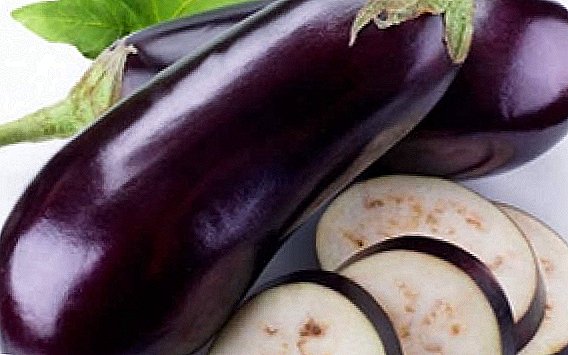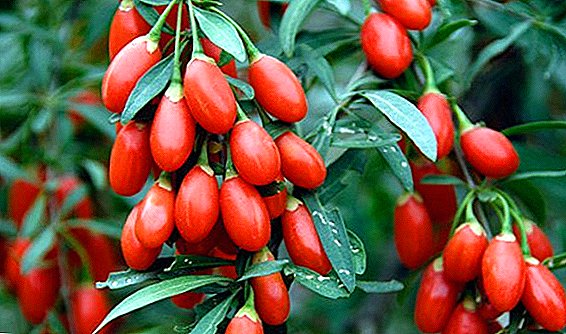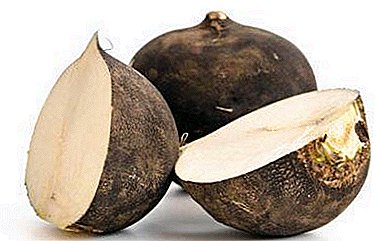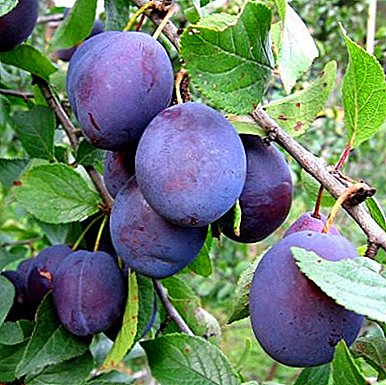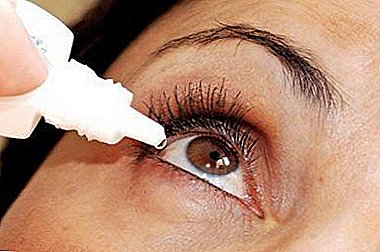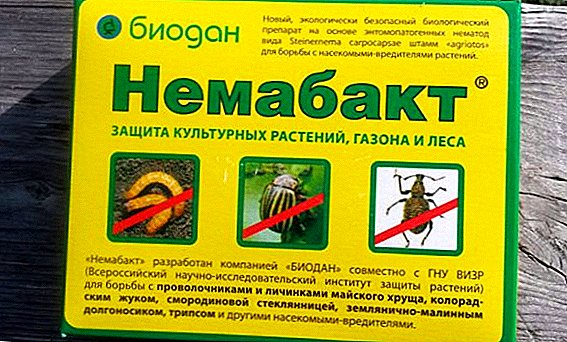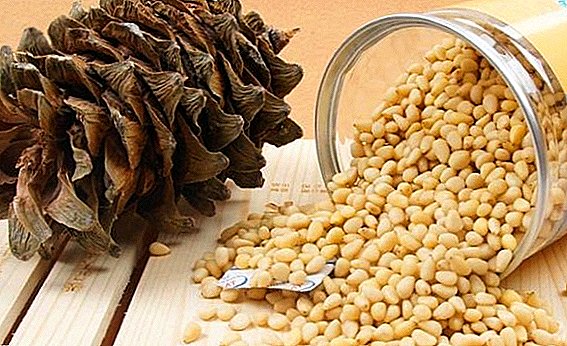 Growing seedlings is a very important matter. There are many tricks that will help in the future to grow a good harvest. One of these tricks is the pick. Many believe that it is not necessary, so what to do or not do it - everyone decides for himself. However, undoubtedly, it has many advantages. Let us consider in more detail what it means to dive in a plant and how to do it correctly.
Growing seedlings is a very important matter. There are many tricks that will help in the future to grow a good harvest. One of these tricks is the pick. Many believe that it is not necessary, so what to do or not do it - everyone decides for himself. However, undoubtedly, it has many advantages. Let us consider in more detail what it means to dive in a plant and how to do it correctly.
What is a picking
This expression sounds unusual; Many probably do not even know what it is. The word "peak" came to us from France and means a stake or a peg. The fact is that before picking a young seedling under a peg was called a pick.  Now picking is transplanting seedlings into separate containers to improve nutrition and space for new roots to grow.
Now picking is transplanting seedlings into separate containers to improve nutrition and space for new roots to grow.
Important! The main task of the picking is to "harden" the plant and strengthen its root system.
What are the benefits and harm
A pick has a number of undoubted advantages:
- Saving space. Before transplanting plants in a pot, they are sown in boxes, where they sprout and grow. Pots take up much more space and are not as convenient as drawers that can be easily put on the windowsill.
- Selection of the best seedlings. When the time for picking is appropriate, it is possible to select the strongest plants, and get rid of the weak ones already at this stage.
- Seedlings do not grow much upward, as the transplant suspends its growth.
- When picking, you can inspect the roots and remove plants with rotten roots.
- After picking, new roots are formed in plants, and in general the entire root system becomes more powerful and strong.

But there are also negative sides:
- The risks of getting sick in young plants that are together in the same box are much higher. Dense thickets retain moist air, which is an excellent condition for the development of fungal infections.
- Not all plants fit this method of transplantation. For example, for eggplants, this procedure can generally be detrimental, since their leaves evaporate a large amount of moisture and after transplanting the roots will not be able to cope with such large losses.
- It is necessary to spend money not only on pots, but also on boxes. Accordingly, the waste of land will be doubled.
Learn more about the pick of cabbage and tomatoes.After weighing all the pros and cons, decide whether the game is worth the candle. But, as we see, there are advantages, and quite substantial ones.

Mandatory and optional
Experts say that picking is an absolutely optional enterprise. However, most plants tolerate it well and produce a bountiful crop, - of course, if it was correctly performed.
But there are exceptions - plants with a very sensitive root system, which will be discussed later. Now you need to decide whether to pick a mandatory or you can do without it. There is no clear answer to this question, since every gardener has his own experience and his own views on this matter.
You can try to first pick a small amount of seeds, look at the results and draw conclusions.
Tomatoes, for example, there will be no harm from this. Some of them not only dive, but also cut the roots, incise the stem, hit them during flowering for better pollination.  Tomatoes react to it painlessly and give in return a rich harvest. Of course, at first you should not use such radical methods, but you can dive them without fear for your crop, because it will only bring benefit.
Tomatoes react to it painlessly and give in return a rich harvest. Of course, at first you should not use such radical methods, but you can dive them without fear for your crop, because it will only bring benefit.
Did you know? The roots of ordinary oak can go into the ground at 100 meters.
Picking methods
Now we will consider what ways there are to swoop down seedlings and find out what it is - transshipment of plants.
It will also be useful for you to learn about growing seedlings in cassettes, in diapers, with the help of peat tablets and how to make the backlight for seedlings.
Classic
In the classic version of the picking, the plants should be transplanted into separate containers of 10 square meters cm, with the main root shortened by about 1/3 of its length.
Tomatoes deepen to cotyledon leaves, and peppers dive a deeper distance than before, as they are not very active in forming additional roots.
Of course, this method is not suitable for all plants, because shortening the main root deprives them of the main supplier of nutrients.  However, in the regions of the middle zone, where the land is not warm enough for the time of planting, this method will do. Long roots will not be able to provide plants with necessary nutrition, but additional side roots, on the contrary, will cope with this task.
However, in the regions of the middle zone, where the land is not warm enough for the time of planting, this method will do. Long roots will not be able to provide plants with necessary nutrition, but additional side roots, on the contrary, will cope with this task.
Transshipment
This method has significantly fewer flaws. Therefore, if you are not sure about the expediency of carrying out a normal picking, and the seedlings clearly lack light and space, then feel free to choose this method.
In order to carry out the transshipment of plants, you must first water the container with shoots, which already have 1-2 leaves. Then prepare the individual cups and half fill them with a suitable substrate.
After that, carefully pick up the seedlings with a fork or something else along with the soil and place in prepared cups.  There is also a method of multiple transshipment, in which the seedlings are transplanted several times into increasingly large containers. Many use this method, despite the fact that it is more laborious.
There is also a method of multiple transshipment, in which the seedlings are transplanted several times into increasingly large containers. Many use this method, despite the fact that it is more laborious.
And all because such manipulations with seedlings significantly increase the yield. True, such a good result can only be expected from tomatoes.
Roots up
Quite an unusual way, which is used mainly to slow down the growth of plants.
For this, the pots are filled with a fertile substrate, the wells are made of sufficient depth, the roots are folded in the form of the Latin letter U and lowered into the soil so that the ends of the roots are slightly below the cotyledon level. Then the seedlings need to sprinkle with earth to the lowest leaves.  Under such conditions, the main root is not strongly drowned in the soil, and many new roots form on it. The root system at the time of landing on the beds will be very developed and quickly take root in the garden.
Under such conditions, the main root is not strongly drowned in the soil, and many new roots form on it. The root system at the time of landing on the beds will be very developed and quickly take root in the garden.
Important! Plants, peaked by the method of transshipment, do not develop as quickly as others. It is necessary to take into account this moment and plant seeds for seedlings earlier.
When to dive seedlings of popular crops
Now you know how to dive seedlings in various ways. Now consider when to dive the main crops.
Learn about the intricacies of growing seedlings of pepper, tomatoes, eggplants, beets, parsnips, savoy cabbage, cucumbers.
Tomatoes
Tomatoes begin to seat after the appearance of the first leaves. These usually appear after 5-7 days after germination. However, it is worth to wait another couple of days, as the five-day trunks are still very weak and easy to damage during transplantation.  You can, of course, do the picking sooner or later, but with an early transplant it is enough to damage a single root - and the plant will take a long time to restore it, and with a late transplant, the roots of the plants will already have time to intertwine (about 2-3 weeks) and A pick will severely damage the root system.
You can, of course, do the picking sooner or later, but with an early transplant it is enough to damage a single root - and the plant will take a long time to restore it, and with a late transplant, the roots of the plants will already have time to intertwine (about 2-3 weeks) and A pick will severely damage the root system.
Therefore, the best time to pick a tomato is 10-15 days after germination.
Did you know? Previously, tomatoes were considered poisonous and people thought that after eating them you could go crazy. Therefore, in Russia they were called "rabid berries".
Peppers
Peppers have a very vulnerable root system, so the majority of gardeners believe that early picking will be more efficient and the pepper will be able to take root in a new place much easier.  The optimal period for pepper is the stage of appearance of 2-3 true leaves, which appear 15-20 days after germination.
The optimal period for pepper is the stage of appearance of 2-3 true leaves, which appear 15-20 days after germination.
Again, some transplant at earlier or later periods, but in this case more significant damage to the rhizomes can not be avoided.
Cucumbers
Pickling of cucumber seedlings is carried out at the stage of developed cotyledon leaves, which corresponds to 5-7 days after germination. 
Eggplant
Eggplant, like the rest of the above cultures, usually dives at the appearance of 1-2 true leaves.
However, many prefer the earlier picking, even at the stage of the cotyledons, because the roots do not take up much space and are easier to transplant into another container. 
Cabbage
The recommended age of cabbage seedlings depends on its variety. For the white is 7-8 days, and for color and broccoli - 9-10 days.
Also, transplantation is not recommended to be done later than 14-26 days for white cabbage and 17-19 days for cauliflower and broccoli, since during this period the root system is already formed and the transplant will only be an obstacle for the further development of the plants. 
Poorly carried picks
And finally, we have reached the category of plants that do not tolerate a pick or do not accept it at all. These include pivotal plants - for example, eggplant. In order for the eggplant to be able to move the picking more easily, it is necessary to pinch the main root, and this will cause the growth of the fibrous roots.
For any pumpkin crops, (actually pumpkin, squash, zucchini, watermelons, melons) picking is not recommended at all.
They should immediately be sown in containers and after the formation of 3-4 true leaves, plant on the beds.
Now, when you hear the phrase “plant picking,” you won’t ask yourself what it is. You already know how to properly conduct it and what are the techniques. It remains to wish you patience and good harvests!


